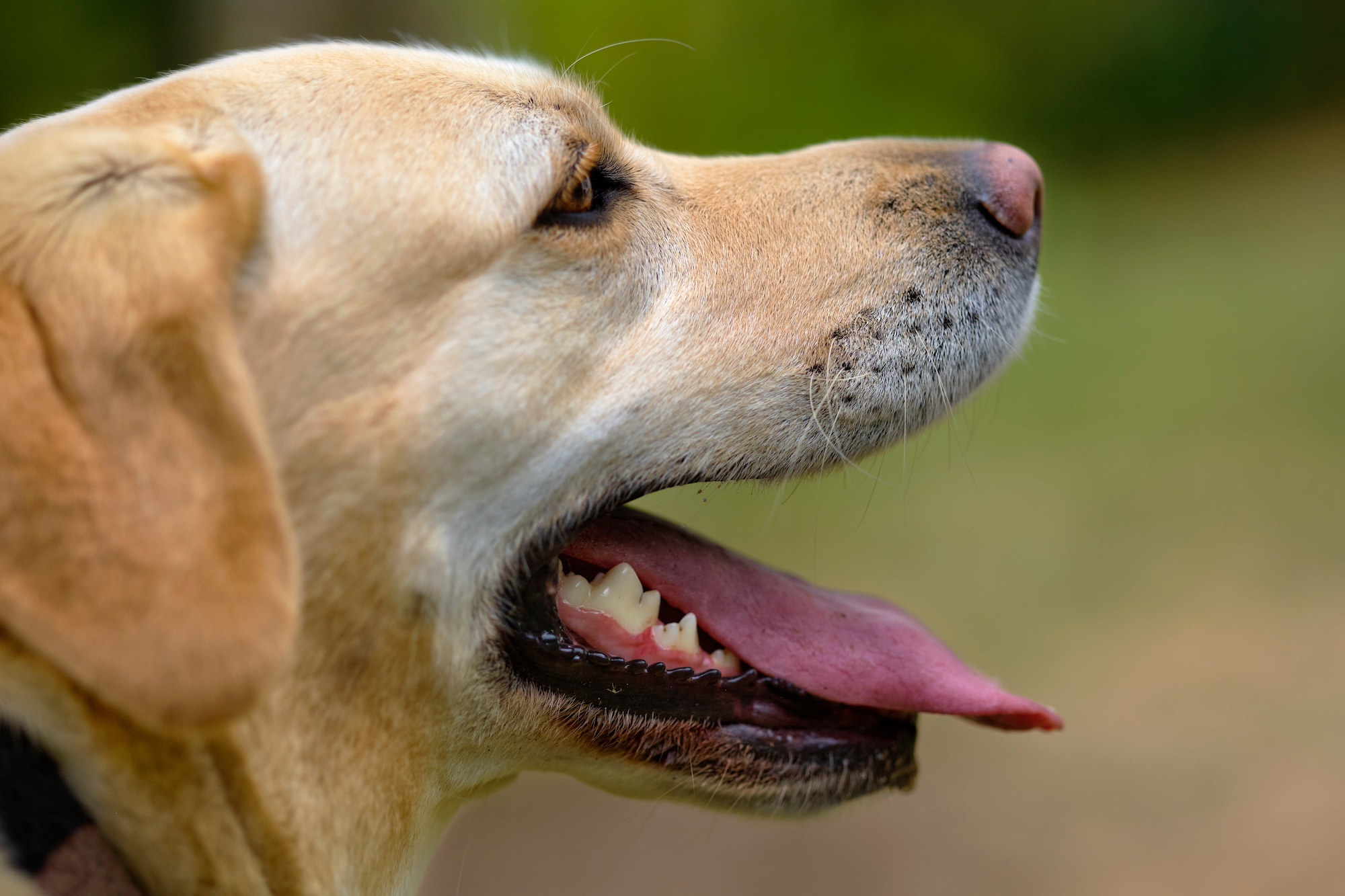You might have heard that dogs “don’t sweat.” This is not true, but in a way it’s a useful myth—because, while dogs do have sweat glands, they don’t keep cool by sweating like humans do.
“People are fairly unique in their ability to sweat as much as they do,” says Brian Collins, DVM, a veterinarian with the Cornell Riney Canine Health Center, “and that’s a very effective way for us to cool off. But for dogs, it’s a minor, almost negligible way to lose heat from the body.” Keeping this difference in mind can help us protect our dogs from getting overheated on sweltering days or during exercise.
The main way that dogs regulate their body temperature is by panting. Drooling and vasodilation (the expansion of blood vessels) also play roles. We’ll get into what this means for them on hot days a bit later. But, in the meantime—if dogs’ sweat is not keeping them cool, what is it doing?

What is dog sweat for?
“Most of the sweat glands on the dog help protect and nourish the skin,” says Dr. Collins, “keeping it soft and pliable.” He adds that these glands also “have some antimicrobial qualities.”
Dogs have two types of sweat glands. Apocrine sweat glands are located all around a dog’s body, anywhere there is a hair follicle. These glands emit pheromones that give dogs information about each other. You probably won’t be able to smell these secretions, but other dogs can.
Sweat glands on dogs’ paws, and at the tips of their noses where there is no fur, are called merocrine glands. They’re more similar to humans’ sweat glands, and you may even notice your dog sweating more from them on hot days—leaving behind sweaty paw prints. But they’re still not good at cooling dogs down.
Can dogs sweat “too much?”
If you notice that your dog looks “greasier” than normal, it can pay to give your veterinarian a call. Not everything that makes a dog sweat more than you’re used to requires medical intervention, but sometimes extra secretions can be an indication of an issue like allergies.
If sweat doesn’t cool dogs down, what does?
As mentioned above, dogs’ bodies work to keep cool by panting and drooling, and through vasodilation. When dogs pant, moisture evaporates off of their tongues, cooling them down. When dogs drool, the evaporation of their saliva serves the same function. “Sometimes drooling can be an early sign that a dog is getting too hot,” says Dr. Collins. “So if you have a dog who tends not to drool a lot, but they are drooling, I would definitely start taking measures to cool the dog off.” These would include giving the dog access to fresh, cool water (which they should have all the time) and bringing them inside to a climate-controlled environment. If you suspect that your dog is showing signs of heatstroke, call your vet immediately.
Heatstroke is a life-threatening emergency, and dogs may continue to exercise or play on hot days even if those activities are very risky for them. You’ll have to look out for their wellbeing. Read our full guide to heatstroke for details about the condition, how to avoid it, and what to do if your dog shows any signs of it.

Dogs’ relatively inefficient cooling means that you need to make sure they always stay hydrated, and should avoid exercising them when it’s too hot. In fact, if it’s really scorching, you should avoid going outside any more than you have to. Certain dogs—those who are brachycephalic (flat-faced), overweight, older, or ill—may require even more caution when it comes to the heat.
Dr. Collins is emphatic that dogs should be in an air-conditioned home whenever it’s hot enough out that there are heat advisories for people, especially because their bodies are not as good at staying cool as ours are. “I think it’s critical,” says Dr. Collins. “I think people should really think twice about taking their dog outside any more than necessary for bathroom breaks [on very hot days.]” Even for those bathroom breaks, choose the cooler parts of the day—early morning or nighttime—and seek shade if the sun is out. Also make sure that your dog has water to drink if they need it, and feel free to mist them with cold water from a bottle.
So, while dogs do perspire in their own way, they’re depending on you to sweat the details about keeping them cool and hydrated on hot days and during exercise. As always, if you have questions about any aspect of your individual dog’s health, reach out to your veterinarian.









